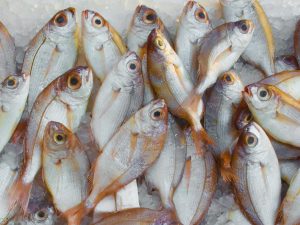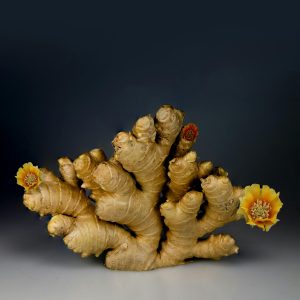According to the Met Office, April was the sunniest April for the UK since records began in 1910. What better time then, to don those walking shoes, dust off the pedals and get back into the garden?
Whatever your activity of choice, exercise is important for both our physical and mental health. But for those of us with some form of arthritis, gardening and other such activities may not be as enjoyable as they once were.

That said, joint paint needn’t stop you from being physically active – there is plenty you can do to reduce pain and inflammation.
Diet really is important when it comes to joint health because what we eat can impact how our joints feel – some foods can help with joint pain, others can make it worse. Inflammation is your body’s way of healing and repairing itself as well as protecting itself from foreign invaders such as viruses and bacteria. So when we eat highly processed, artificial foods that aren’t natural or found in nature, it comes as no surprise that our bodies recognise these foods as foreign too.
Eating less of the foods that increase inflammation and lots more of the anti-inflammatory foods that help to reduce it, can help: reduce your intake of coffee, alcohol, fizzy drinks and foods made from refined white flour and white sugar, as these foods are known to promote unhealthy levels of inflammation.
 Do eat lots of oily fish, nuts and seeds, and plenty of fresh vegetables and berries; they are packed with nutrients and antioxidants that can help to reduce inflammation. And our spiky friend pineapple is worth singling out as it contains an anti-inflammatory enzyme called bromelain.
Do eat lots of oily fish, nuts and seeds, and plenty of fresh vegetables and berries; they are packed with nutrients and antioxidants that can help to reduce inflammation. And our spiky friend pineapple is worth singling out as it contains an anti-inflammatory enzyme called bromelain.
Another natural anti-inflammatory is Devil’s Claw, or Harpagophytum, a plant only found in the Kalahari Desert of South Africa. It has been used for many years to help reduce rheumatic, muscle and joint pain and studies suggest that long-term use of Devil’s Claw is not only safe, but it may also lead to improvements in those with chronic lower back pain. Try A. Vogel’s Atrosan® Devil’s Claw tablets.
Rub them better! For topical relief from inflammation you may wish to try an Arnica-containing gel, such as Atrogel Arnica Gel. Homeopathic Arnica is well-known for its use for bumps and bruises, but fresh Arnica herb, applied topically as a gel, can be speedily effective for reducing inflammation and pain.
 Ginger has anti-inflammatory properties that are known to help relieve muscle soreness, menstrual cramps, headaches and arthritis. It is thought to relieve joint pain by blocking several enzymes that promote inflammation and discomfort. One study found that ginger reduced pain and knee stiffness in people with osteoarthritis by 40%!
Ginger has anti-inflammatory properties that are known to help relieve muscle soreness, menstrual cramps, headaches and arthritis. It is thought to relieve joint pain by blocking several enzymes that promote inflammation and discomfort. One study found that ginger reduced pain and knee stiffness in people with osteoarthritis by 40%!
Turmeric would also appear to have heaps of anti-inflammatory potential. It looks a lot like an orange version of its plant-cousin ginger, and like ginger is well-documented for its anti-inflammatory and antioxidant action in the body. This is due largely to a chemical compound called curcumin, which is thought to slow down the inflammatory pathways if used in the treatment of conditions such as arthritis.
 Finally, stay active. Regular, gentle exercise will help you maintain a healthy weight, which in turn lessens the stress you place on joints, helping to improve the pain of arthritis.
Finally, stay active. Regular, gentle exercise will help you maintain a healthy weight, which in turn lessens the stress you place on joints, helping to improve the pain of arthritis.
Now where did you put those walking boots?
For further information on hayfever and allergy, visit Jay Thankey at Natural Health, 339 Ballards Lane, North Finchley, or call 020 8445 4397.


